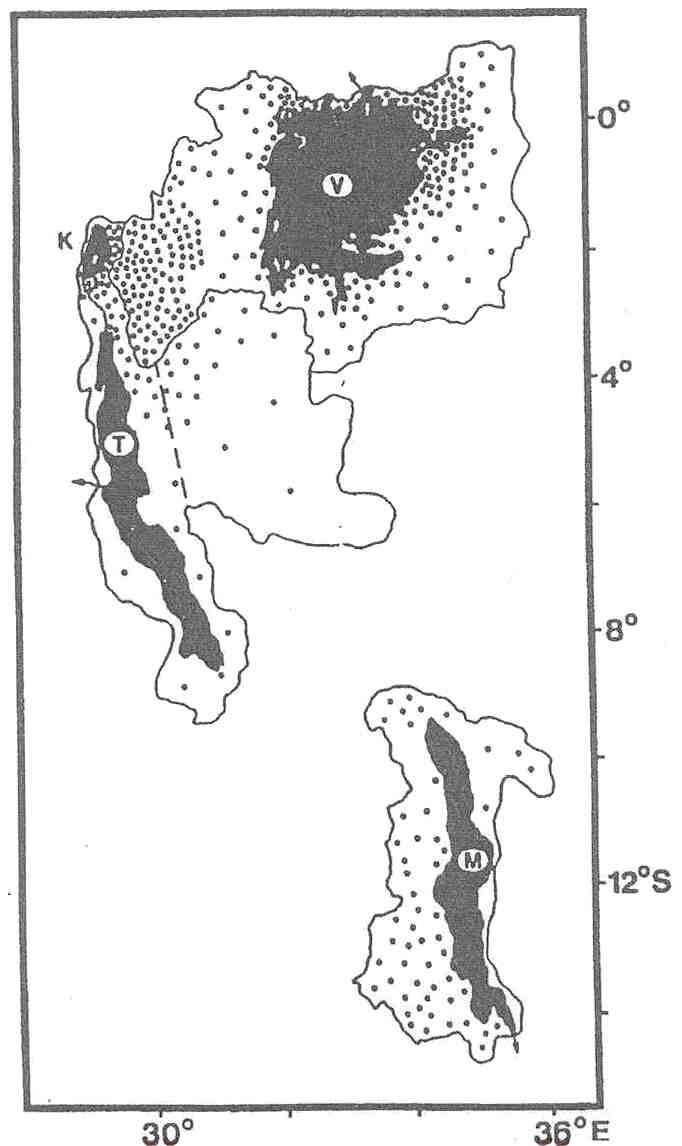


 |  |  | 20.5 Eutrophication, Malawi, Tanganyika, Victoria |
Eutrophication may result into increased sedimentation, which may lead into a rise of the anoxic boundary layer (Figure 3), increased bottom water oxygen demand and greater light attenuation. This will reduce the depth of the euphotic zone. Such effects may result in shrinkage of available fish habitat and is detrimental to fisheries. A change in phytoplankton species composition may also result. The nature of these changes will be determined by the absolute and relative input rates of N, P and Si, by hydrodynamics, and by the complex interplay between internal nutrient cycling and the trophic structure. In the Laurentian Great Lakes, eutrophication has been observed to result in lower Si concentrations [404] due to rapid growth and subsequent sedimentation of diatom frustules in rivers. The increased productivity in Lake Victoria during 1991 (Mugidde 1993) relative to 1960-1961 [453][454] appears to have had the same effect (Figure 3). While diatoms were still abundant in Lake Victoria during 1990, they consisted primary of thinly silicified Nitzschia [52], where as Talling [455] reported dominance by Melosira, a large heavily silicified diatom (which is now absent except perhaps in marginal bays where Si remains available from inflowing streams).

Eutrophication in lakes often results in cynobacteria dominance, although others factors such as temperature [481], light [506], and pH [420] may also affect the competitive ability of these organisms. This scenario is apparent in Lake Victoria. Relative to that observed during 1960-1961 [454], evidence of increased nutrient input [218] is accompanied by higher cyanobacteria biomass [346]. Because denitrification will minimise the influence of additional N input in Lakes Tanganyika and Malawi, eutrophication in these lakes will result in a greater increase in P available than N availability, and the significance of N-fixing cyanobacteria would also increase in these lakes. Such a shift in phytoplankton species composition might result in a lower efficiency of energy transfer to higher trophic levels, since cyanobacteria are generally considered a poor food source [276][224][210]. However the ability of some Tilapiines (Tilapia and Oreochromis species) to digest cyanobacteria [320][314], suggests that eutrophication may result in a more productive fishery dominated by herbivorous fishes. While this would be beneficial with regards to food production (Tilapiines), such an environment would not be favourable for zooplanktivorous fish species, since cyanobacteria are a poor food source for zooplankton.
 |  |  | 20.5 Eutrophication, Malawi, Tanganyika, Victoria |